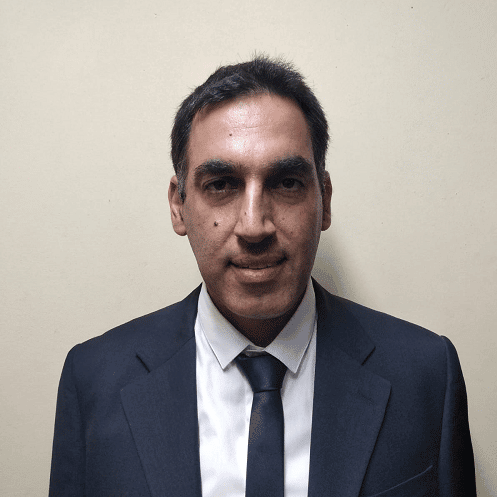Dr. Yossi Mansharof: Nuclear weapons would boost Iran to superpower status. Diplomacy has failed to stop the regime.

Israel Hayom 17.07.2020
By Neta Bar
The blast that lit up the skies of Iran the night of June 26, lit a veritable fire in Tehran and on social media almost as quickly. The users were the ones who set the rapid-fire pace of the news and the ones who reported, photographed, and located the event at one of the Iranian military’s most secret bases, the Parchin facility – which is also used for the Islamic Republic’s missile program and its missile industry.
Media outlets identified with the Iranian regime rushed to deny the reports, but satellite images showed that the explosion had indeed occurred at Khojir, the missile production complex of the Parchin facility, and showed damage to one of the structures at the site.
The mysterious blast was the opening shot of a series of incidents in which a number of sensitive and important facilities in Iran have been the scenes of explosions or fires. Power stations, petrochemical factories, and an automobile industry factory owned by the Iranian Revolutionary Guard Corps all went up in smoke, causing the government to become hysterical.
The jewel in the crown of the recent wave of incidents occurred in the middle of the night on July 2, near a small town in the desert of southern Iran. Shortly after 2 a.m., an enormous blast ripped apart a structure that according to reports had been used to develop and test centrifuges for uranium enrichment at the Natanz facility.
An unknown group by the name of “Cheetahs of the Homeland” claimed responsibility for the action in a string of emails sent to various media outlets hours before anyone knew about the explosion. Unlike the incidents that preceded it, the Iranian regime and the country’s media outlets hinted that this explosion might have been sabotage. After The New York Times revealed that the damage done might delay Iran’s nuclear program by two years, Iranian Foreign Ministry Spokesman Abbas Mousavi made an explicit threat that Iran would get even with whoever is discovered to be responsible for the attack.
Despite the open threats, Iran took care not to accuse Israel directly, leaving it to media outlets and research institutes identified with the regime to hint about that possibility.
Brig. Gen. (res.) Yossi Kuperwasser, former head of the IDF Military Intelligence Directorate’s Research Division and today a senior researcher at the Jerusalem Center for Public Affairs, is convinced that Tehran is still bracing itself for more blows.
“Although it appears that Iran doesn’t have any incriminating information about whoever was responsible for the blast at Natanz and what appears to be a string of explosions at facilities where the military manufactures strategic weapons, it is clear that it assumes that the responsibility lies with the usual suspects: Israel and the US,” Kuperwasser says.
“Cooperation with opposition elements [in Iran] is also a possibility. They want to attack the nuclear program and embarrass the regime, and there is no doubt that this goal has been achieved. Moreover, it looks like Iran cannot know whether or not to expect more precision strikes,” he adds.
“Even without a smoking gun, and despite the economic distress [in Iran], pressure on their allies in the region, continued attacks on their people and their bases in Syria, and the spread of coronavirus, the Iranians will look into possible responses in order to deter further attacks and save their honor, which has now been hurt again after the killing of [former IRGC commander] Qassem Soleimani.
“One possible line of response is cyberattacks, but we cannot rule out the possibility that they will also look at the option of kinetic action, mainly in Syria. In the meantime, China is taking advantage of Iran’s weakness to promote a multi-year cooperation agreement with Tehran on terms that are very convenient, thereby challenging the American policy on Iran,” Kuperwasser says.
The price of treason
Iran’s nuclear program has become one of the ayatollah regime’s flagship initiatives. Even though Tehran insists that it has no intention of manufacturing nuclear weapons, much of the world, and especially the Middle East, sees a nuclear Iran as a nightmare and will do everything it can to torpedo that scenario.
Over the years, a series of creative, daring, and sometimes merciless operations have managed to delay the program. In 2010, then-President Mahmoud Ahmadinejad admitted that his country’s nuclear program had suffered a major cyberattack by a “worm,” a sophisticated malware program that wreaked havoc at the Natanz uranium enrichment facility – the same one that was the site of a major fire earlier this month.
The malware, which according to foreign experts was jointly developed and uploaded to the facility’s computers by the Americans and Israel, operated for years without being detected, thanks to its ability to mimic the digital signature of other programs. Slowly, the worm caused enormous damage to the Iranian centrifuges. The engineers and scientists couldn’t understand what was wrong.
But the war on Iran’s nuclear program sometimes took on a much more brutal and less sophisticated guise. In 2010, when the Stuxnet virus was discovered, three of the nuclear program’s most senior scientists were killed by a bomb that a passing motorcyclist threw into their car. In 2011, another top-level Iranian physicist, Dr. Darioush Rezai, was killed on his doorstep. These killings continued until 2013 and included the head of Iran’s cyber warfare program well as a senior official in the IRGC. The Iranians blamed “Zionist agents” for the operation and promised a harsh response.
Western newspapers claimed that the killings were the work of the People’s Mujahedin Organization of Iran, a left-wing group that took part in the revolution that brought Ayatollah Khomenei to power in 1979, only to be outlawed and persecuted like all political groups that did not fall into line with the regime. According to these claims, the Mossad intelligence agency had trained opponents of the regime to tail members of Iran’s scientific and military elite. Three decades later, the ayatollahs were learning the price of having betrayed their partners.
In 2018, Mossad agents secured a trove of documents about Iran’s nuclear program, removed them from safes in a warehouse in south Tehran and smuggled them to Israel in an operation that could be the inspiration for a thriller. The operation exposed to the world what Israel had said over a decade earlier – that Iran, despite its official declarations, never abandoned the idea of developing nuclear weapons.
Why is Iran willing to conceal, lie, and work against its own declared ideology, suffering enormous losses and international boycott, to secure nuclear weapons? Dr. Yossi Mansharof, an expert on Iran at the Jerusalem Institute for Strategy and Security, explains:
“There are three reasons behind the Iranian regime’s constant aspiration to achieve nuclear capability. First, it sees itself as constantly besieged and persecuted. Tehran believes that nuclear weapons will serve as an insurance policy against external threats.
“Second, Tehran is determined to obtain what it thinks is the ultimate deterrent weapons, after the Iran-Iraq War, which claimed the lives of hundreds of thousands of Iranians, and Iraqi Scud missiles that struck the Iranian home front.
“Third, nuclear weapons would boost Iran to superpower status,” Mansharof says.
Tehran’s vigorous denials about its attempts to achieve nuclear capability stem partly from its plan to deceive the world and partly from the character of the regime. In the eyes of the regime, nuclear capabilities would allow it to ensure its own survival. Therefore, the regime permits itself to lie, in accordance with the Shiite principle of “taqiya,” which allows the faithful to twist the truth in order to survive.







 - בניית אתרים
- בניית אתרים